Artificial Intelligence in Content Creation
In this article, we will talk about AI in the field of content generation. We will look at what artificial intelligence is in terms of content, what AIs are on the market, and how we can interact with them.
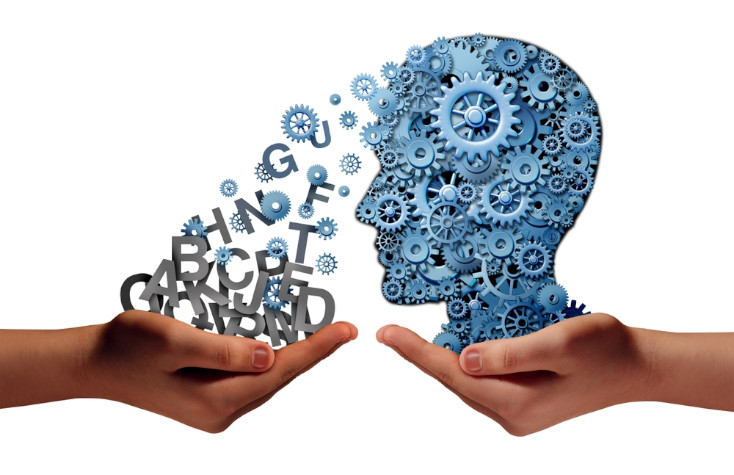
What is Artificial Intelligence
Artificial intelligence (AI) is intelligence—perceiving, synthesizing, and inferring information—demonstrated by machines, as opposed to intelligence displayed by animals and humans.
Such a definition was crystallized by the efforts of many anonymous Wikipedia editors.
Or this is the definition given by AI GPT3, tied to the neuroflash service, which I will talk about a little later. AI insists that it will move us into the future and improve our lives, and it never looks suspicious.
Artificial intelligence (AI) is the ability of a computer program or system to learn and adapt to new situations. It has been used in a wide range of fields, including business, medicine, law, and military. AI is becoming increasingly important as we move into the future. With its ability to automate tasks and make decisions, AI has the potential to greatly improve our lives.
Now it is enough for us to know that AI is a mathematical model capable of self-improvement. Currently, AI Midjourney and Dall-E are very popular – they create illustrations, paintings, magazine covers, etc.
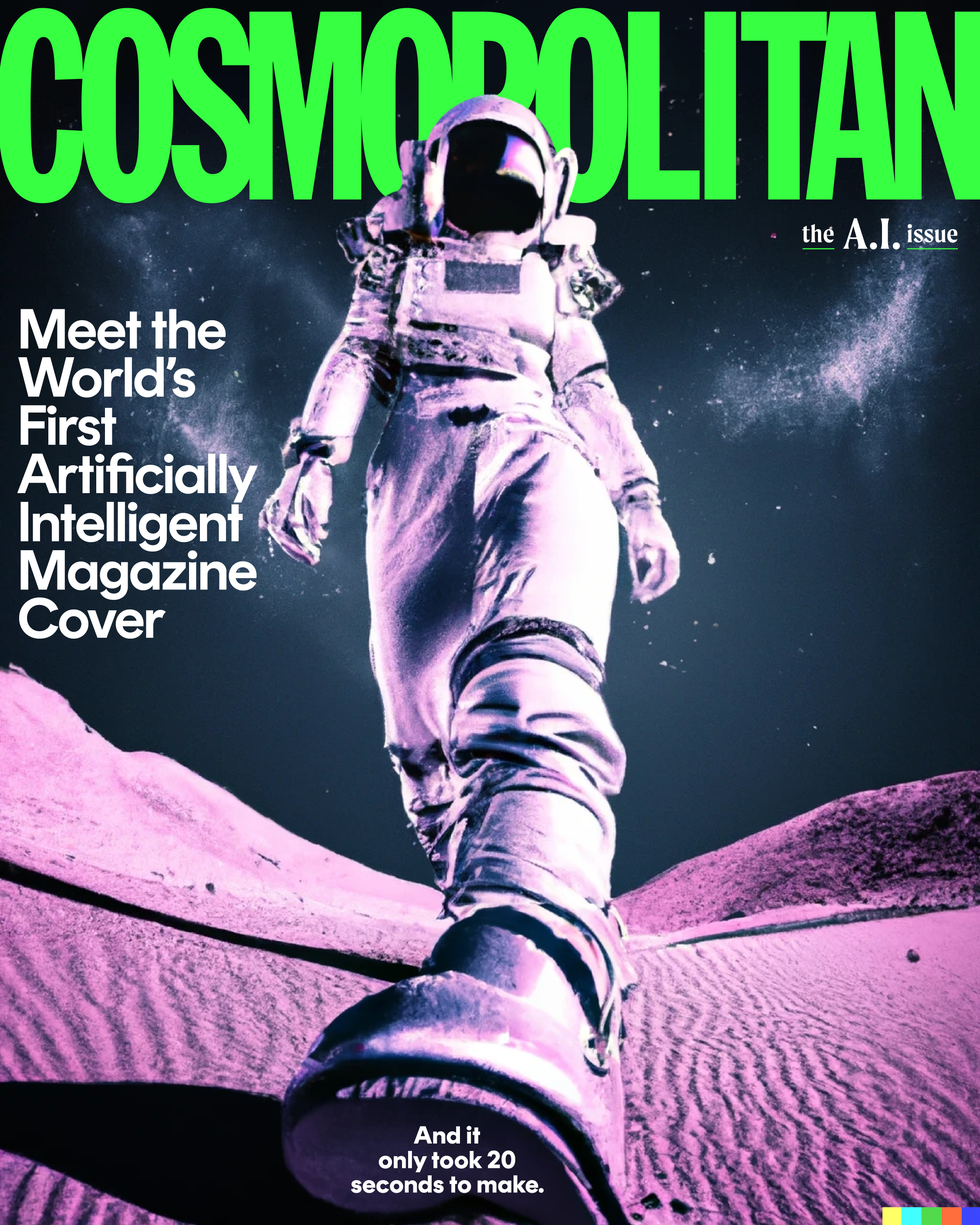
Cosmopolitan cover created by artificial intelligence. Source
Among the text generation, the most popular AI that makes noticeable info drives is Generative Pre-trained Transformer 3 (GPT3) from OpenAI. This model writes persuasive scientific articles about itself and communicates in text chats like a real person.
But there are also less “media” AIs. So, social networks use self-learning models to apply filters and masks (they first learn to recognize faces and their elements), Google uses neural networks to intelligently optimize Performance Max campaigns, and GitHub has an automated assistant that helps users write code. And GitHub users themselves create and publish their own neural networks.
Hypothetically, you can work with all these models directly by joining the testing. But I’m not a programmer, so I have to use more user-friendly services. In fact, these are intermediaries who have already written the infrastructure for contacting AI.
Thanks to the services, we can use the capabilities of AI even without having direct access to a neural network and without knowing programming languages. Next, we will consider what services are, how they are useful, and how to use them in everyday work.
Text Generation Services
Neural networks work best with the English language, and sometimes robots write in English better than non-English speaking people. Artificial intelligence knows how to use idioms, metaphors, and adjectives; and services are able to follow the structure of the text according to the genre: a letter will have a polite greeting and farewell, and, for example, a post for social networks will end with a logical call to action.
Neural networks are excellent at writing on “lite” topics. Ask the AI to generate a “how to be productive at work” post, and you’ll see a standard set of time management clichés that you can immediately post to the motivational community.
But the more professional the task becomes, the more carefully it is necessary to check the content of what is written. I still haven’t managed to get any content about Google Analytics 360 from any service – everyone is persistently moving the topic to Universal Analytics or Google Analytics 4.
So, artificial intelligence is already capable of generating text suitable for publication, but I still advise you to check the content of what is written.
Smodin Author
Smodin is a tool mostly for rewriting articles. You give him a topic or keywords, he googles it a bit, offers an article plan, and as a result gives his version.
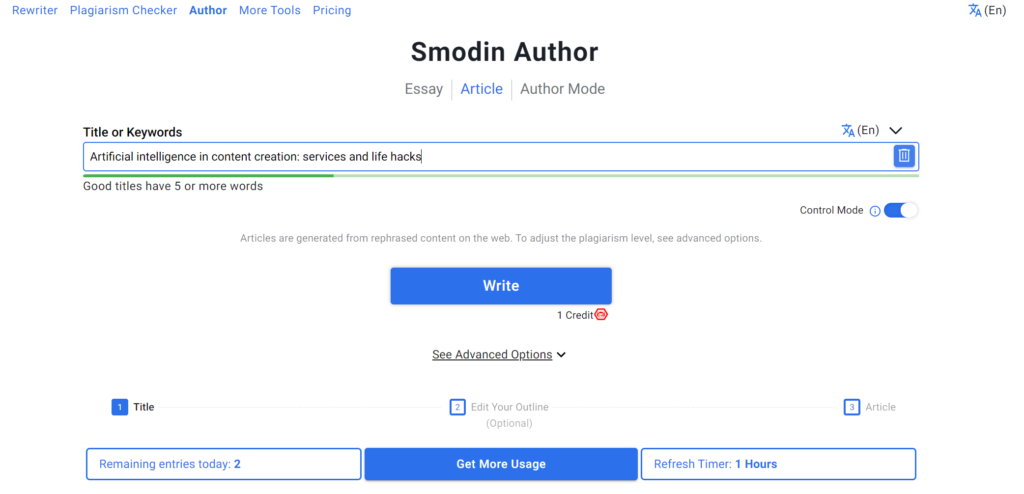
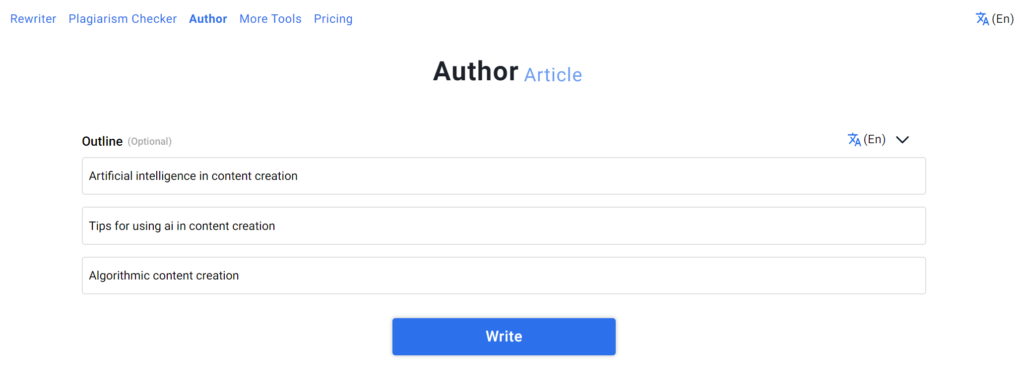
The tool is free, three “credits” are given per day, and essentially 1 “credit” is used to create one article. But there is a limit to the number of characters that their service agrees to show for free. At the time of writing the article, you can view only 1000 characters, and then you have to write yourself.
This tool can be useful for creating an SEO article plan. If you’re looking for a new approach to creating content that answers people’s questions to Google, this service will help you analyze your current output and offer you a smart article plan.
Rytr
Rytr is a tool that generates texts in more than 20 forms.
There is an opportunity to write texts for blogs, letters, reviews, texts for advertising in social networks and Google Ads, descriptions of channels and videos for Youtube, and also knows how to do useful SEO procedures.
In general, this service can be used to extract keywords from a competitor’s text, generate additional similar ones, and then generate your own ads for targeted and contextual advertising.
It should be noted separately that this service understands and works with the Ukrainian language. For example, let’s generate a formal letter based on simple theses.
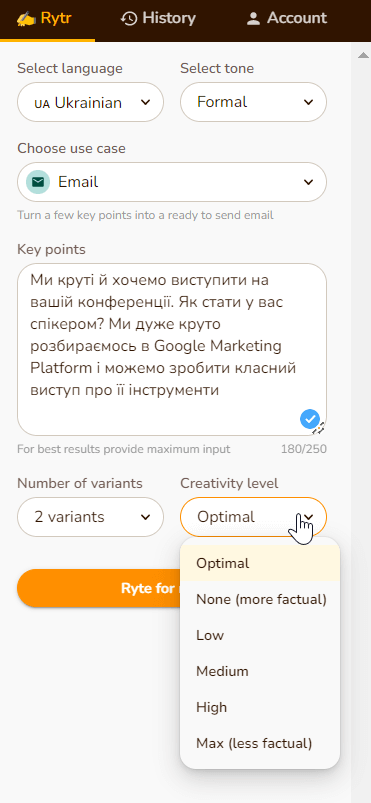

So, Rytr understood what we wanted to write a letter about, structured this information and even supplemented it in some places.
In the service, you can adjust the level of creativity, and this will help you get out of the “creative crisis” and bring up new ideas and solutions. Here, for example, is a song about an SMM specialist in an enthusiastic tone and at the maximum level of creativity. In the middle of the song, he goes to kill spammers and requalifies as a white hat seoshnik, but with the rest he returns to followers.
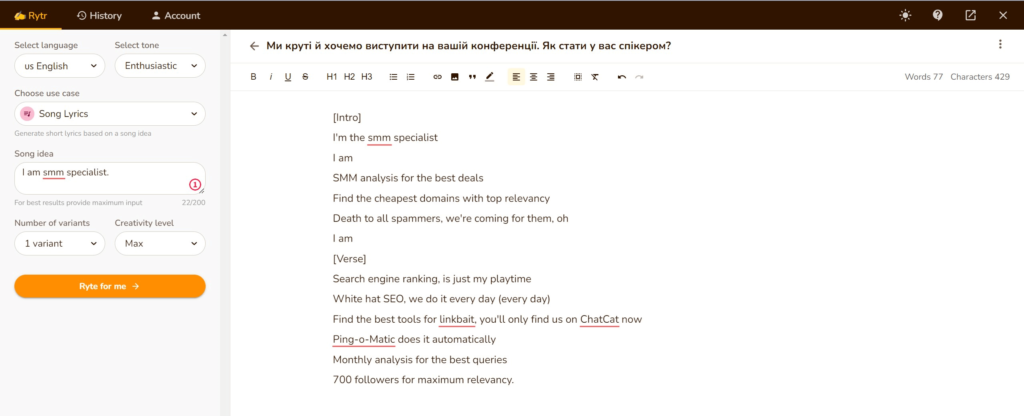
Neuroflash
Neuroflash is another text generator. It offers more than 80 text options that it can do: from bios for social networks to love letters.
I started using this service when I had to write several dozen SEO descriptions for the site pages. My ability to be creative with form and content ended at about 10 descriptions, and the neural network described everything that was needed without issues.
Let’s consider the functional using the example of the AI definition given at the beginning of the article.
First, you should choose the language and fill in the brief (it changes depending on the chosen form of the text).
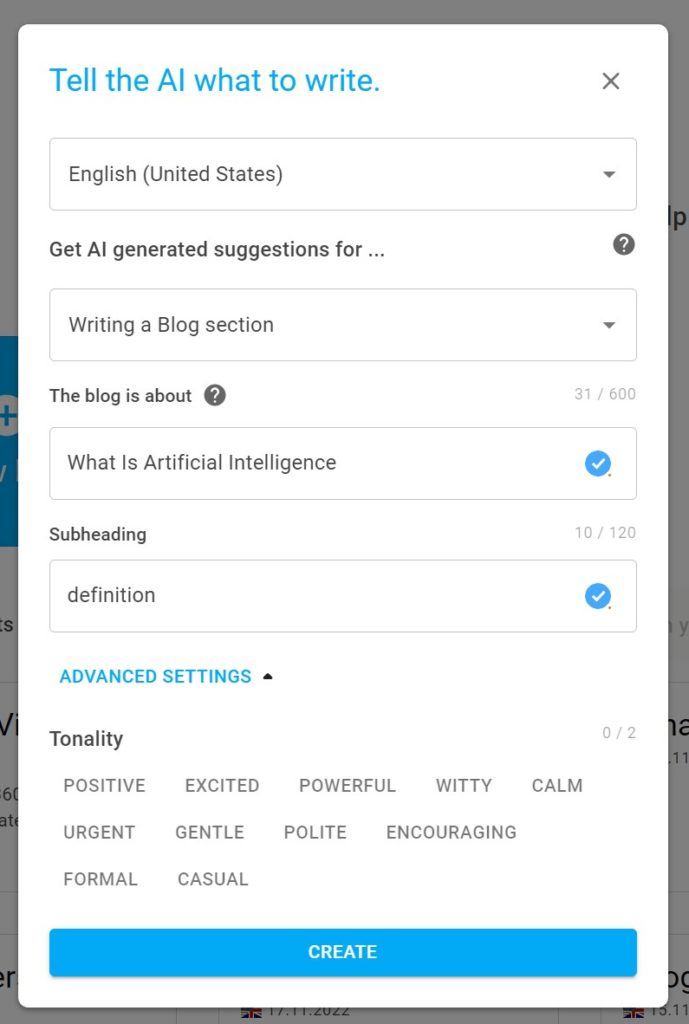
After that, the service will offer its variants.
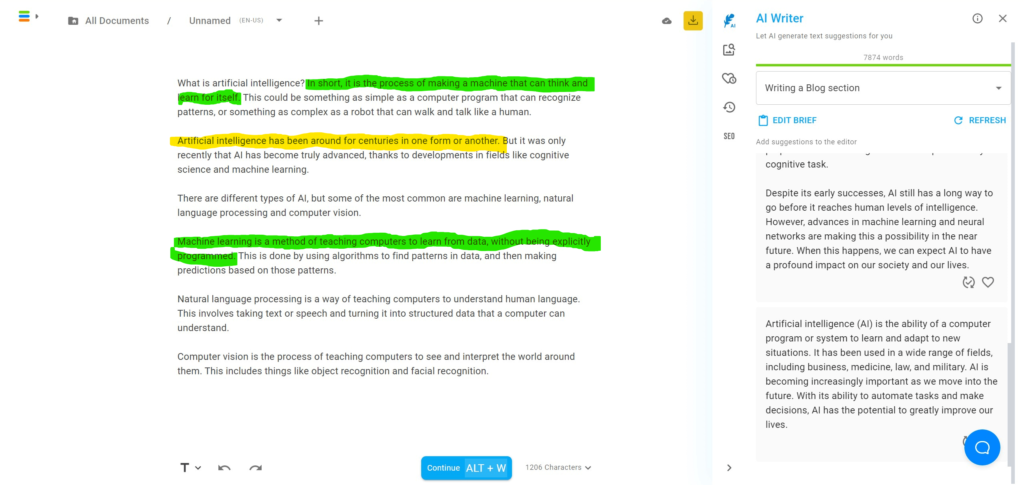
You can click on the option you like and edit it further in the text field on the left. You can also click “Continue” and he will continue writing.
There is also a chance that the service could not generate enough high-quality options and will ask you to change the brief for another try. Since the pricing depends on the number of words generated, it is very gratifying when the service does not waste words on what it considers to be of insufficient quality.
Image Generation
We don’t yet live in a world where AI can draw anything for you and it looks cool, or at least usable. Currently, neural network generators create amazing art, illustrations, or artistic stylizations — images that don’t really pretend to be realistic. If you need a fantasy world of the future or a cute alien – no problem at all.
But with the photo, with realism, everything is still bad. Next, we’ll look at several tools that produce realistic and non-realistic examples. In order for the comparison to be at least somewhat objective, all applicants have the task: “A dog plays the piano on a spaceship.”
Hypotenuse
Hypotenuse is a service that produces 4 graphics options; only 512*512 are available on the free tariff. You can choose the style of work, its “aesthetics” and mood; you can also choose a genre — from street art to watercolor. If you select photo generation, you can see issues with black and white keys, and there are questions about the dogs themselves.
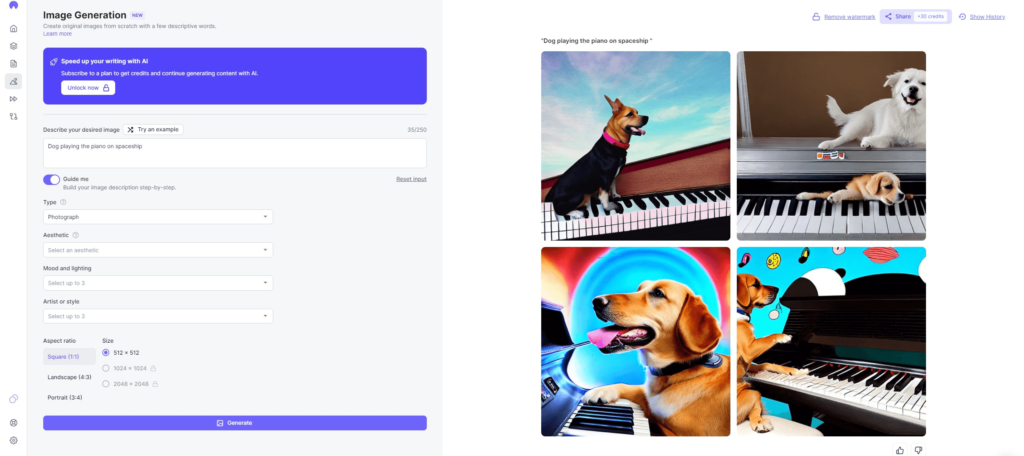
But the artwork with watercolor dogs already looks ok.
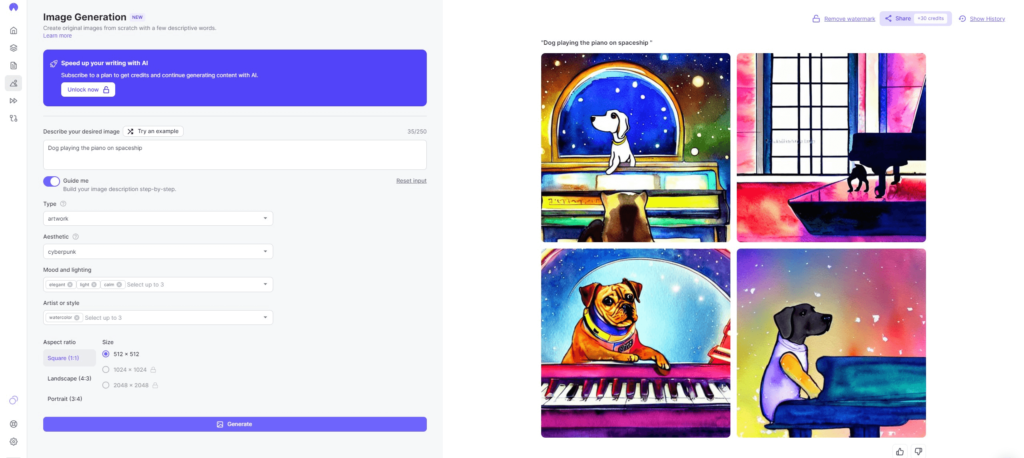
Craiyon
Craiyon is like a cringe generation service to me. I am convinced of this opinion, because immediately under the image options, the service offers to print the results on T-shirts, and in the FAQ there is a question “how to make better images?”.
So, let’s compare the realistic photo and illustrations created according to the advice of the developers with the words “illustration” and “high definition”.
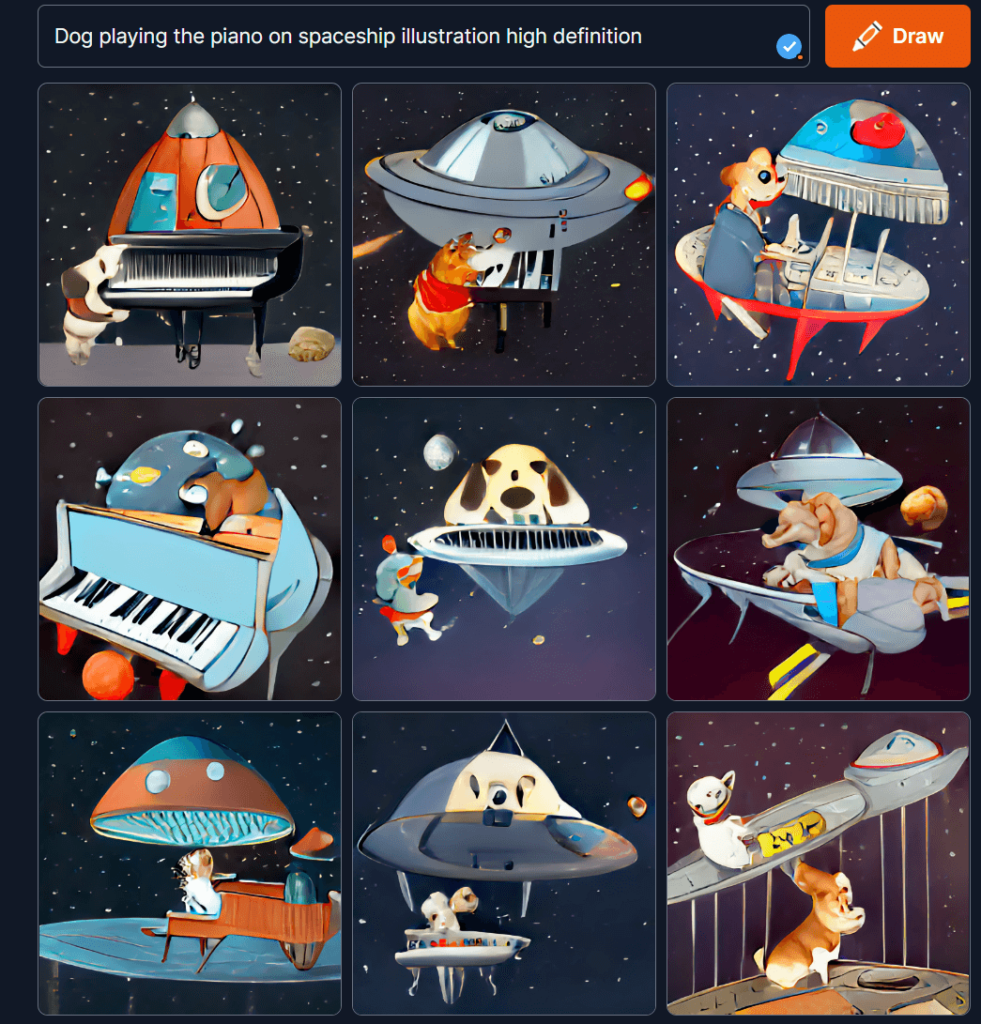
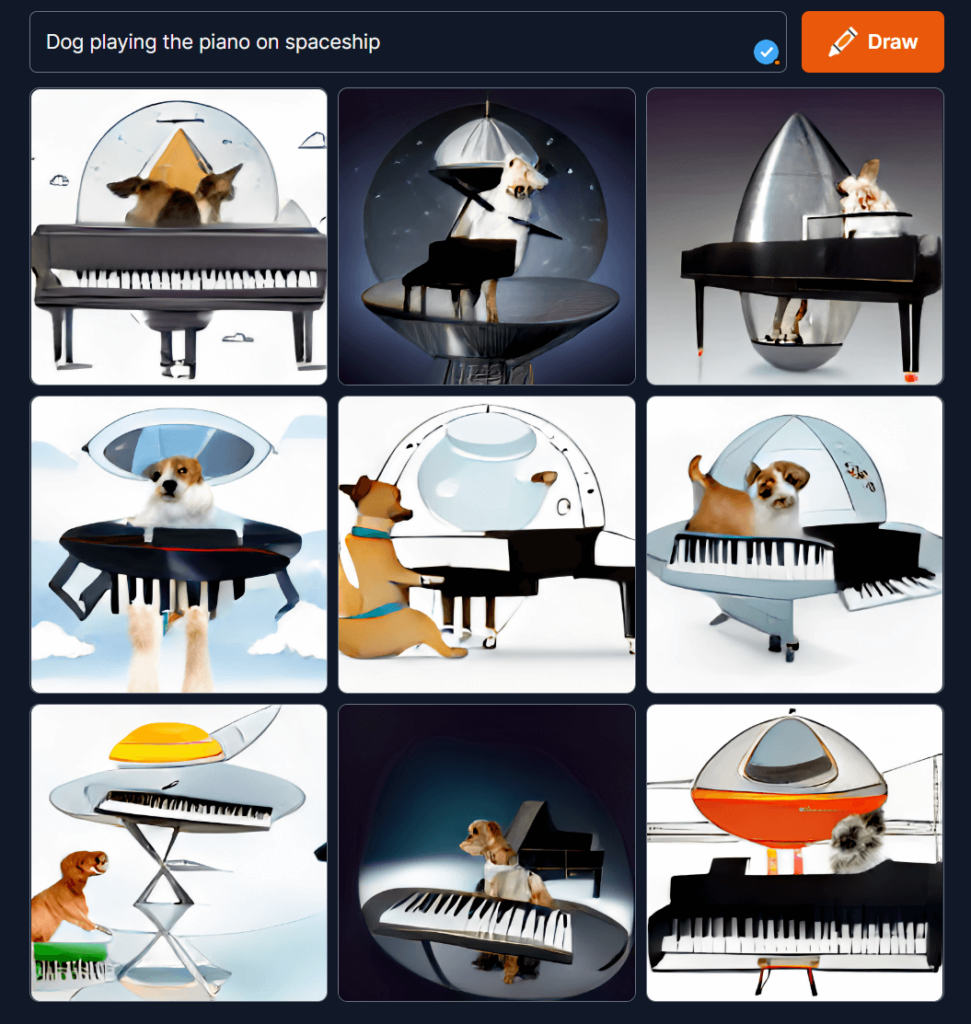
The resulting images can be used for inspiration, or when the most unusual shapes and solutions are needed.
NightCafe
NightCafe allows you to generate images based on text description using the popular Dall-E 2 and several other neural networks. The results are extremely aesthetic, but the realism is still imperfect, especially in the matter of the piano keyboard. However, for illustration in the “anime” style, realism is not so important, but aestheticism is at its height.

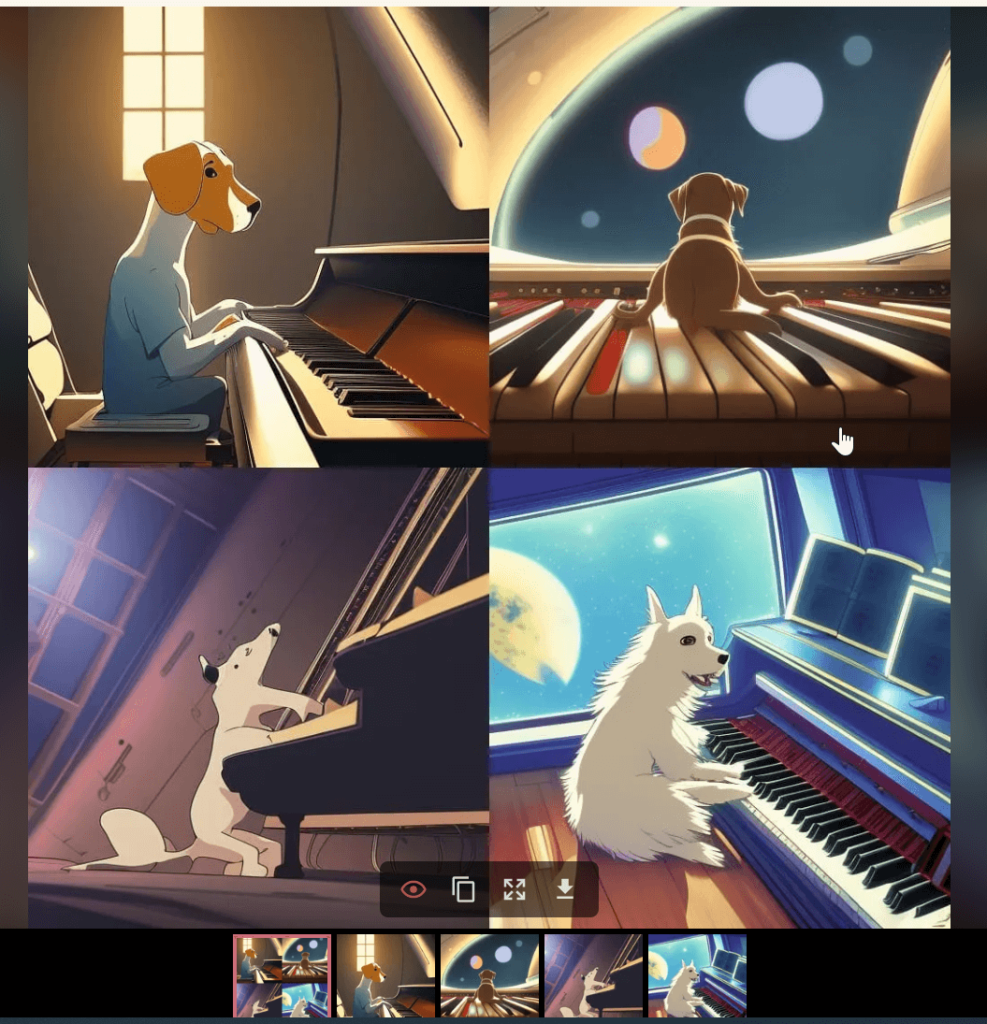
Also, this generator is interesting from the point of view of copyright. There is still no consensus in the world as to who owns the copyright to the generated image: the authors of the neural network, its owner, or the person who makes an “order” and prescribes his idea to the neural network. But NightCafe clearly articulates that the image belongs to whoever came up with and described it

Conclusions: Advantages and Disadvantages of Using AI
So, artificial intelligence can already be used in everyday work. A variety of generators can be useful to marketers, even if they don't know programming languages or don't know how to directly work with a neural network using code.
Among the advantages of using AI, the following can be distinguished:
- They help to get out of the “creative crisis” and diversify monotonous tasks, such as writing meta tags for the site.
- In some places, the texts are improved, especially the English ones.
- They know how to perform basic work that would previously be entrusted to an intern. Trainees can now be trusted with primary processing generation.
On the other hand, there are several nuances that should be taken into account before incorporating AI into daily work.
- The result of the generation is unpredictable, it can be very cool and high-quality, or it can turn out to be some nonsense.
- Needs control. In the texts, it is very rare that you can take the published AI version immediately. Generated images can only be published with the postscript “look at how AI interprets something”. For the most part, the generated texts and images must be corrected.
In general, robots will not take away our jobs. But now bots are a crutch that here and there perform tasks that they would not have been needed before, or would have been dumped on. But you should already be mentally prepared for the appearance of “AI operator” vacancies and the appearance of graduates of various schools with such specialization.
Those who want to not just catch up with this trend, but lead it, should dig GitHub and learn python (or another programming language) and write services that AI operators will use in the future.